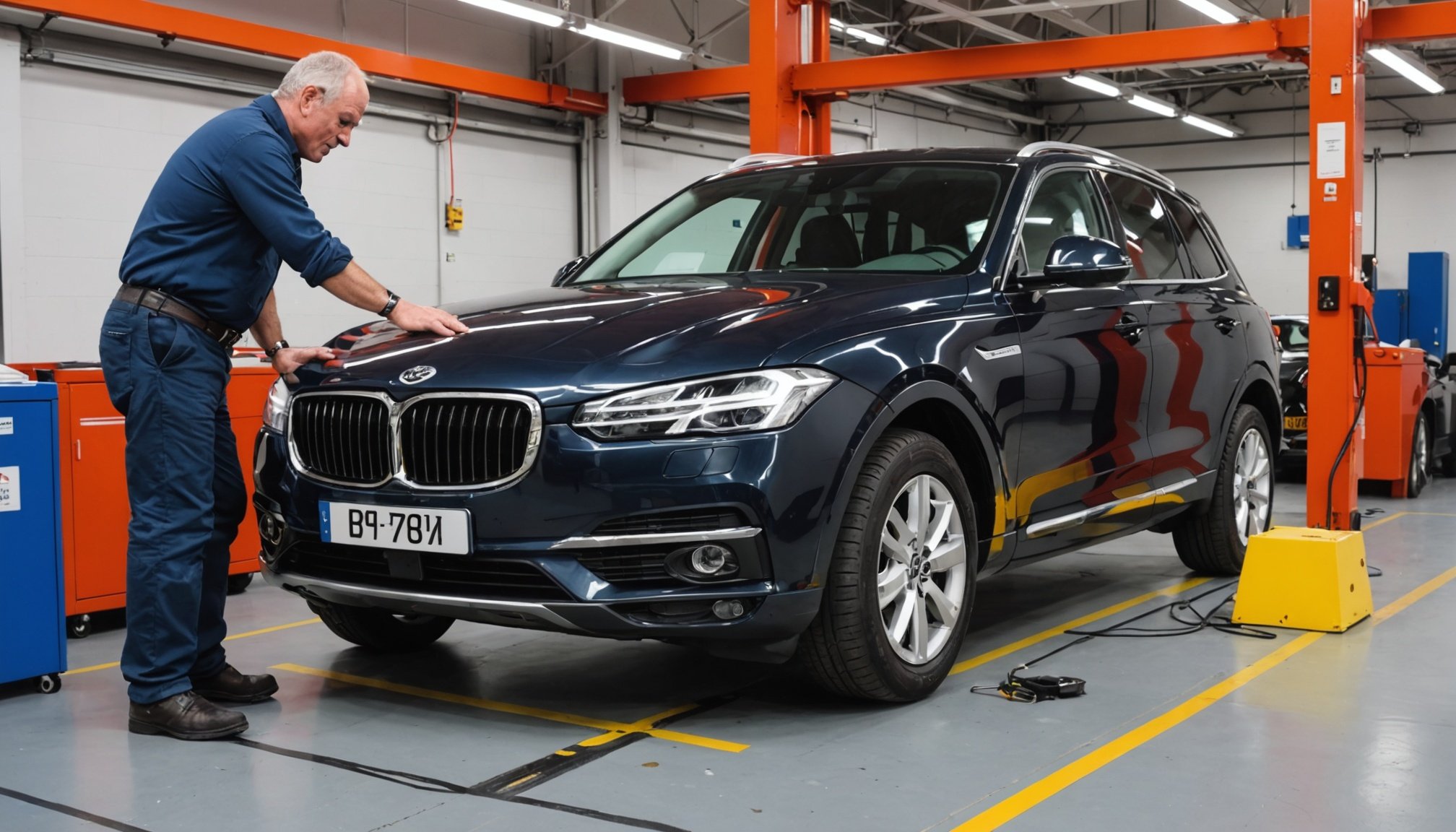Comprehensive Overview of Parking Sensors
Parking sensors have become increasingly popular in British vehicles, offering enhanced safety and ease when manoeuvring tight spaces. These sensors detect objects surrounding the vehicle using ultrasonic or electromagnetic technology, alerting the driver to potential obstacles.
Types of Systems
There are various types of parking sensor systems suitable for British vehicles. Ultrasonic sensors are the most common and work by emitting sound waves that bounce back from nearby objects. Electromagnetic systems create a magnetic field and detect disturbances caused by obstacles. Both systems come with their own set of advantages. Ultrasonic sensors are precise and effective, while electromagnetic sensors have the benefit of being discreet and require less maintenance.
In the same genre : Elevate your british suv”s off-road performance: must-have aftermarket upgrades for adventurers!
Aftermarket vs. Factory-Installed Sensors
When considering parking sensors, one can choose between aftermarket and factory-installed systems. Factory-installed sensors are integrated into the vehicle design, offering reliable performance with a higher initial cost. In contrast, aftermarket sensors provide flexibility and affordability, allowing vehicle owners to customize systems based on personal preferences and budgets. Ultimately, the choice comes down to individual needs and the desired level of integration and performance.
Tools Required for Installation
When preparing for the installation of parking sensors in British vehicles, having the right equipment is crucial. Essential installation tools include a drill with appropriate bits, a tape measure for precision, and a hole saw that matches the size of the sensor you are installing. Parking sensor tools often come with the sensor kit itself, providing all parts necessary for affixing the sensors securely.
Also to read : Upgrade your british luxury vehicle: the definitive handbook for installing a heated steering wheel
Consider investing in reliable brands such as Bosch or Makita for durable and efficient tools. These brands are known for their high-quality equipment, ensuring ease and precision throughout the installation process.
Additionally, it is vital to incorporate safety equipment into your setup. Safety goggles protect your eyes from debris when drilling, and gloves can shield your hands from sharp edges. A ground strap is useful for preventing static discharge, which is essential for maintaining the integrity of the vehicle’s electrical system.
In summary, having the proper installation tools not only facilitates a smooth and efficient process but also ensures the sensors are positioned optimally for performance and safety. Reliable brands and appropriate safety gear are fundamental to achieving a successful installation.
Step-by-Step Installation Guide
Installing parking sensors in British vehicles can be a rewarding DIY project. Following a structured installation guide ensures both efficiency and effectiveness.
Preparing for Installation
Before beginning, ensure all necessary components are on hand. Selecting a clear area for installation is crucial. An organised workspace allows for proper access to the vehicle and all tools required. Essential tools include a drill, measuring tools, and the parking sensor tools from your kit. Also, wear safety gear for protection.
Mounting the Sensors
Mounting the sensors involves selecting optimal locations on the vehicle. It’s vital to measure accurately, using the tape measure to ensure even placement and proper sensor function. Drill holes as needed, adhering to the sensor kit’s guidelines.
Wiring the System
Wiring the system requires connecting sensors to the vehicle’s electrical system. Follow the included instructions closely, ensuring wires are secured and connections are stable. For those not confident in handling electrical connections, consulting a professional ensures safety and functionality.
Each step supports the effective installation of parking sensors, enhancing driving security and convenience. With attention to detail and adherence to instructions, any car enthusiast can undertake this project confidently.
Calibration Techniques
Ensuring the precise performance of parking sensors in British vehicles necessitates meticulous calibration procedures. Proper calibration significantly enhances sensor accuracy, leading to improved obstacle detection and vehicle safety.
Calibration typically commences after sensor installation. Adjustments are made to ensure each sensor’s field of detection is correctly aligned. Begin by activating the vehicle’s sensor system and using a reference object to test sensor response. If the sensor detects the object within the expected range, calibration is successful.
Tools and software play a pivotal role in achieving optimal results. Many modern sensors are equipped with proprietary software facilitating automatic adjustments, while manual calibration might require devices like OBD scanners. These tools help fine-tune sensor sensitivity and range, ensuring that signals are appropriately received and processed.
Minor errors in parking sensor calibration can lead to misleading alerts or missed obstacles. Periodic recalibration, especially after any significant vehicle repair or sensor replacement, is fundamental. Being adept with common calibration tools, or consulting the vehicle’s manual, aids in maintaining sensor reliability and functionality.
These calibration insights act as an indispensable guide, empowering individuals to effectively manage their vehicle’s parking sensors.
Safety Precautions
When installing parking sensors in British vehicles, adhering to installation safety protocols is essential for both the installer and the vehicle’s integrity. Ensuring the safe operation of tools prevents accidents and unwanted damages.
Begin by wearing appropriate safety gear such as gloves and safety goggles. This protects against sharp edges, debris, and tool mishaps. A well-ventilated work area minimises the risk of inhaling fumes or dust, maintaining good air quality. Moreover, remove distractions to stay focused during installation tasks.
Regular maintenance checks post-installation safeguard the consistent performance of the sensors. Periodically clean the sensors to avoid obstruction by dirt or mud, which might affect their accuracy. Check the wiring to ensure connections remain secure and intact.
In terms of ongoing maintenance tips, warmly wet a cloth to gently clean the sensors and their connections. Performing sensory system checks after significant impacts or accidents ensure early detection of misalignments or damage.
Finally, never overlook updated software or firmware information, as newer versions might improve sensor functionality. Ensuring sensor safety through these measures ensures longevity and reliability, fortifying your vehicle’s manoeuvring capabilities and safety performance.
Troubleshooting Common Issues
Navigating parking sensors in British vehicles can sometimes present challenges. Understanding common problems that users face is essential for effective troubleshooting parking sensors.
Identifying Issues
The first step is identifying the root cause of sensor errors. Common signs include erratic beeping, constant alerts without obstacles, or silence when an object is present. These typically stem from misalignment or dirt obstructing the sensors. A simple inspection can help pinpoint visually obvious problems.
Step-by-Step Solutions
- Clean the Sensors: Gently wipe with a damp cloth to remove any dirt or mud causing false alerts.
- Check for Misalignment: Ensure sensors are not tilted or obstructed. Adjust their position according to manufacturer guidelines.
- Inspect Wiring: Loose or disconnected wires are common culprits of inconsistent performance. Secure all electrical connections, ensuring no wear or tear in the wiring.
Professional Assistance
While many issues are solvable DIY-style, some require professional intervention. If problems persist despite troubleshooting efforts, consulting an experienced technician is advisable. They can validate sensor alignment and address more complex electrical issues, ensuring the system functions optimally, effectively maintaining the safety benefits of parking sensors.
Comparing Different Parking Sensor Systems
When deciding on parking sensor systems for British vehicles, understanding the variety available is vital. There are several popular brands in the UK market that cater to different needs and budgets. This comparison aids in choosing the most suitable option based on cost and features.
Popular Brands and Features
Brands like Bosch and Steelmate offer reliable products with features such as adjustable sensitivity and easy installation. Ultrasonic sensors are prevalent, known for their precise obstacle detection. For more discreet installation, electromagnetic sensors are a viable option, blending seamlessly into vehicle designs.
Cost vs. Feature Breakdown
- Bosch: Slightly pricier, but offers advanced features and high accuracy.
- Steelmate: Budget-friendly with basic functionality, ideal for older cars.
Choose based on vehicle type and budget priorities. For luxury cars, investing in higher-end models ensures enhanced performance and reliability.
Recommendations
Consider vehicle type and environment when selecting a system. In urban areas, systems with a smaller detection range might be better to navigate tight spaces. For larger vehicles, opt for sensors with extended range capabilities to cover blind spots effectively. These factors help match each sensor system to specific user needs, optimising safety and ease of use.
Expert Tips and Additional Resources
For those delving into the world of parking sensors for British vehicles, expert installation tips can offer invaluable guidance. Industry professionals suggest focusing on precision and patience during installation. Aligning sensors accurately can prevent future sensor errors and improve overall effectiveness.
To enhance your installation experience, various additional resources are at your disposal. Online video tutorials provide step-by-step guides, offering visual learners a comprehensive overview. Many car enthusiasts find forums and online communities excellent platforms for sharing experiences and troubleshooting ideas. Engaging in these spaces can offer personalized advice and novel insights.
For a thorough understanding, consult diagrams that depict installation guide steps, from mounting positions to wiring pathways. These diagrams are essential for beginners aiming to achieve a professional-level installation.
If you’re planning a DIY project, consider these expert installation tips shared by seasoned installers:
- Double-check sensor placement against vehicle specifications.
- Keep spare components like wire connectors and clips handy.
- Use a test drive to verify sensor alignment post-installation.
These insights not only aid in effective installation but also extend your troubleshooting parking sensors skills for future adjustments. Remember, patience and attention to detail are your best tools in navigating this process.











